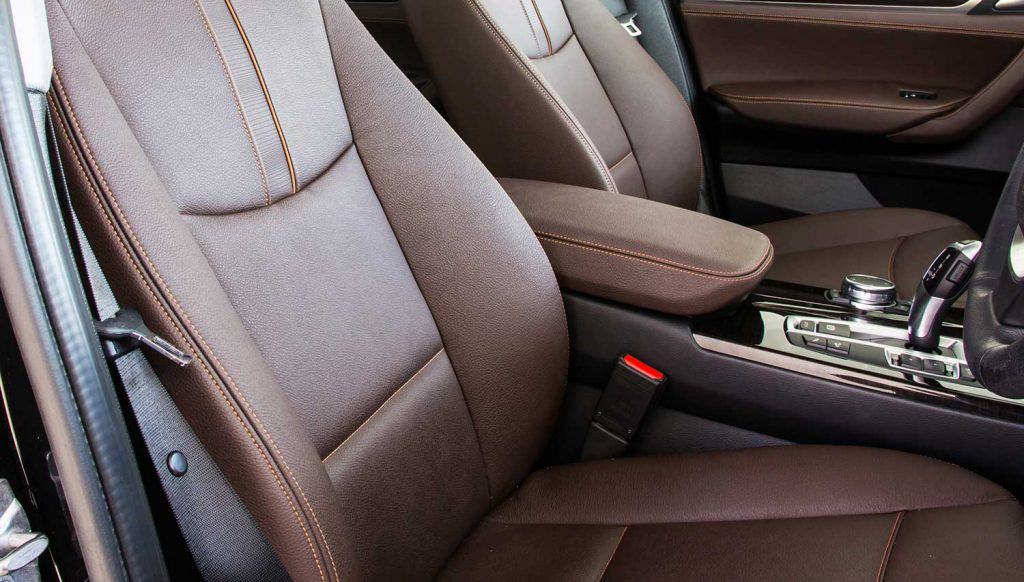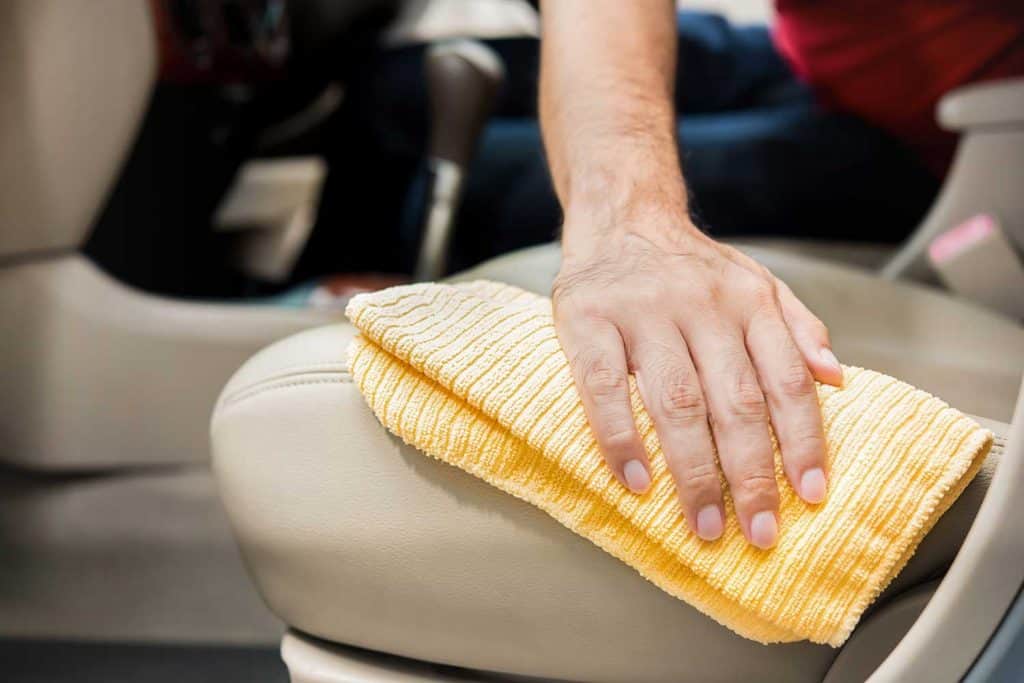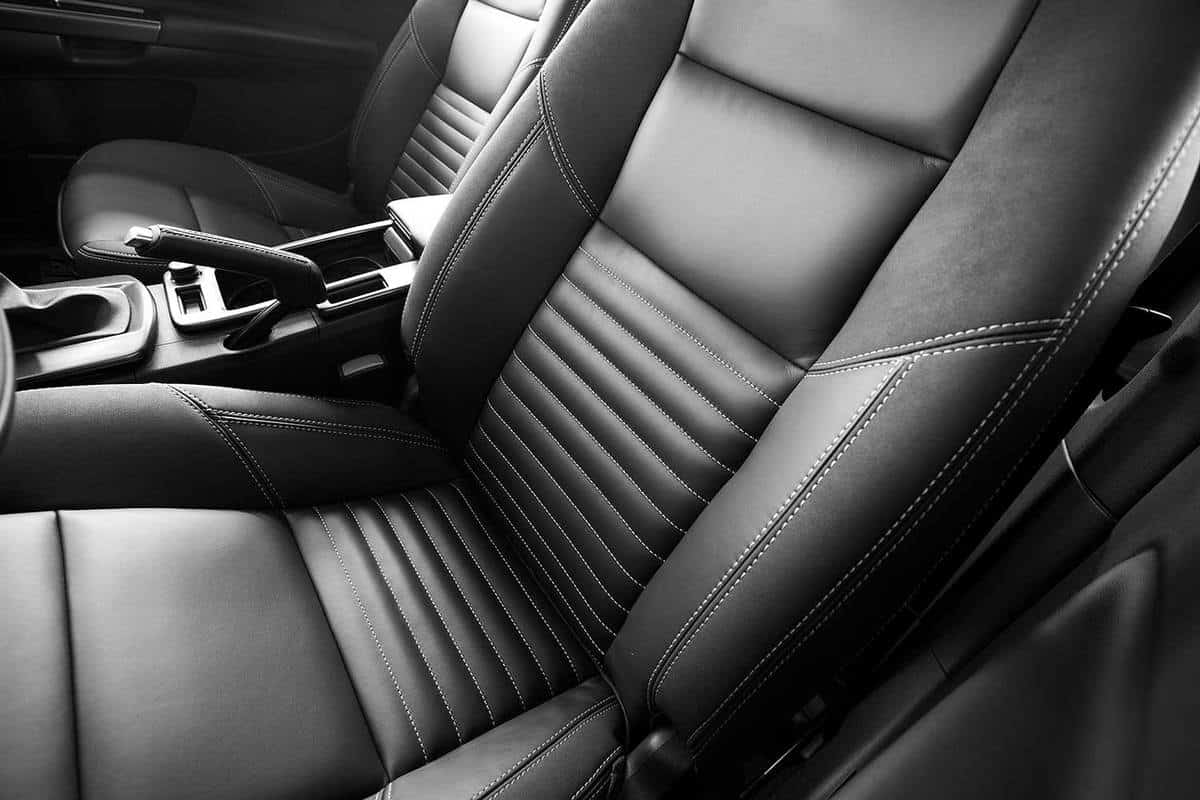When shopping for a new car, one of the decisions you'll have to make is between a cloth and leather interior. Some car buyers may think the leather interior is just a luxurious perk. However, you may want to consider several other factors before committing to a leather interior. We have looked into the advantages and disadvantages of leather car seats on your behalf.
Advantages of leather car seats:
- Easy to clean
- Add to resale value
- Smell
- Reduce allergens in your car
Disadvantages of leather car seats:
- Temperature
- Price
- High maintenance
Also, consider the appearance and comfort of leather as those are based on individual preference. Read further to discover more about leather car seats, how to maintain them properly, and what type of leather is used.

[toc]
The Advantages of Leather Car Seats
Most standard car packages include cloth seats. Upgrading your trim package to add leather seats may cost more, but you might find the benefits are worth it. Let's look more in-depth at each pro.

Easy to Clean
If you've ever owned a vehicle with cloth seats, you know it can be almost impossible to clean out the red juice or permanent marker stains. Vacuuming and shampooing those stains out of cloth seats involves a great deal of time and effort. On the contrary, top-grain leather seats clean up quickly and easily.
Because of their smooth, silky surface, wiping them down is a breeze. Leather rarely acquires stains. Dirt, debris, and pet hair can easily be vacuumed off of leather car seats. Pet hair often sticks to cloth, making it much more difficult to vacuum.

Add to Resale Value
When shopping for a used car, many consumers prefer leather seats over cloth. Unfortunately, you won't recoup every penny you paid to upgrade to leather seats. However, you will get a higher resale value for a car equipped with leather seats than cloth.
Keep in mind, if the leather is in rough condition or has not been adequately maintained, the resale value may not increase just because the seats are leather. Cracked or torn leather seats can be a turn-off to buyers.
Smell
Although this might sound kind of silly, the smell is a large plus for leather car seats. Often, the car's interior smell is the first thing noticed. Leather seats contribute to that "new car" smell people love. It has a very distinct smell that lasts for quite some time.
Also, when something is spilled on leather, the smell isn't absorbed. Cloth interior is just the opposite. Milk spilled on leather will wipe right up. But milk spilled on cloth will seep into the leather leading to a rotten milk smell. Seats made from cloth will continuously absorb the smell of food, pets, or more, while leather will maintain its unmistakable smell.
Reduces Allergens in Your Car
If you are susceptible to allergies, leather car seats are a great option. Fibers on cloth upholstery can collect pet hair, dust, pollen, and dirt that find their way into your vehicle. Your car might be the culprit for your allergy attacks without you even knowing! Wet seats that don't get dried properly can potentially grow mold over time.
Because later seats or non-porous, dirt, pollen, and other allergens won't become trapped inside. Instead, they can be vacuumed right up or wiped down with a damp cloth. Believe it or not, leather seats can contribute to your health!
The Disadvantages of Leather Car Seats
While there are many positives to leather car seats, there are also some negatives. We found a few for you to consider.
Temperature
With the changing temperatures outside comes the changing temperature of your leather interior. Unfortunately, leather will absorb both heat and cold.
If you sit in your car on a hot day, you will feel it. Bare skin against hot leather can be very uncomfortable. Be extra careful in extremely not weather. Hot leather can even cause burns. Leather is also challenging to cool down and retains heat. You might consider purchasing a windshield sunshade to protect your car from the sun's rays.
Find a windshield shade like this on Amazon.
Cold temperature can also affect the temperature of leather seats. Leather takes some time to heat up, and on cold days might make your backside a little chilly. Car manufactures have started installing heat warmers in leather seats to make them even more comfortable for the consumer.
Price
Yes, you are going to pay more for leather seats. More often than not, leather seats are an upgrade in most standard vehicles.
Making leather is very lengthy and costly, and you as the consumer will pay for it. You might find yourself spending as much as a few thousand dollars to upgrade to leather seats. As mentioned earlier, some of this money may be recovered when it is sold if the leather seats are well-maintained.
If you like the look of leather seats, but don't want the extra cost, consider covering your cloth seats with leather seat covers. They are faux leather but provide that leather look you are trying to achieve.
Check out these faux leather seat covers on Amazon.
High Maintenance
Leather seats are easy to clean but do require maintenance over time. If not maintained, they can become torn, cracked, or faded. Leather can become scratched easily as well. Once the leather is cracked and torn, it can be very expensive to fix. Click on the following link to learn more: How to Repair Leather Car Seats?.
How Often Should I Clean My Leather Car Seats?
According to CarsDirect, a general rule of thumb is every three months. If your car continuously sits in hot weather, has pets inside, or is used often, they suggest every two months. Conversely, if your vehicle is rarely used, cleaning your leather seats every six months is adequate.
How Do I Clean My Leather Car Seats?
Now that you know how often to clean them, we can tell you how to clean them.
Step 1: Vacuum all the dirt and debris from the seats.
Step 2: Decide on a cleaning solution- You can either purchase a cleaning solution specially made for leather, or you may make your own from household products. Mixing liquid dish soap and water is a cheap way to make leather cleaner. Mix your soap and water in a 5 to 1 ratio (5 parts of water to one part of dish soap.) NEVER use bleach or ammonia as it can ruin your leather.
This leather car cleaner is available on Amazon.
Step 3: Use A Microfiber Cloth and Apply Cleaner- Scrub out any stains or dirt spots. Don't use too much cleaning solution as leather takes a long time to dry.
Step 4: Wipe Dry- Thoroughly drying your seats after scrubbing is essential. If not dried properly, the leather can warp and crack. Grab a dry microfiber cloth and wipe the seats dry.
Are Leather Car Seats Real Leather?

The simple answer is yes and no. A majority of the leather car seats are genuine leather, but faux leather or part-leather car seats are also available.
Pigmented Leather
Most leather car seats are crafted using pigmented leather. This type of leather is made using cowhide. A synthetic coating is used to cover the hides. Pigmented leather varies in quality based on the thickness of the coating. Flaws in the leather can be covered with a thicker layer of coating. Thicker-coated hides are generally found in cheaper vehicles.
Semi-Aniline Leather
This type of leather is a high-quality leather usually found in luxury automobiles. A very thin coating is used to cover the hides. Covering the leather in such a thin coating will keep the leather feeling soft and supple. Only the best cowhides are used, as the thin coating doesn't mask any imperfections on the hide.
Faux Leather or Part-Leather
Some car manufactures have resorted to faux leather or part-leather upholstery. New technology has improved the feel of faux leather to make it feel and look just like the real thing. NuLuxe is a synthetic man-made material that Lexus has developed. It is an eco-friendly alternative to leather. More affordability and less maintenance make it a great alternative to real leather.
Faux leather is made from a fabric base. This base is treated in wax, dye, or polyurethane plastic to give it the color and texture of genuine leather. Faux leather is much less costly than real leather. However, faux leather may not have the same natural and supple feel as real leather.
Summary
As you can see, leather cars seats have both benefits and drawbacks. Leather gives your vehicle the look of luxury and style while also providing durability. Ultimately, you must decide if leather seats make sense for your lifestyle. Hopefully, this list of pros and cons will help you decide if leather seats are the right choice for you.
To check out some vehicles with leather seats, check out this post: What SUVs Have Leather Seats?




Thank you for this info. I’ve long preferred leather for the reasons you give. Wouldn’t buy a car without it. However, you wrote “leather will absorb both heat and cold.” Heat is a form of energy, and all materials absorb heat; they also release heat when the environment around them is releasing less heat, and it is this lesser heat (relative to other heat sources in the environment) that we think of as cold. Cold is merely the absence of a relative amount of thermal energy. Thank my 10th grade chemistry teacher when I made this mistake in his class. You’d have thought I misspelled salt.